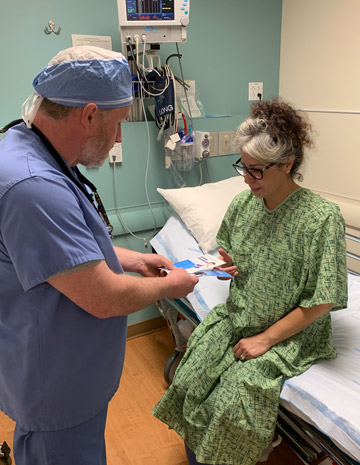Discuss with your patients what they should expect in terms of pain following their procedures and your facility's pain management protocols a week or two before surgery. They should know in advance, for example, that they'll experience a
spike in pain on day 2 or 3 post-op when nerve blocks wear off. Explain the effectiveness of non-opioid alternative therapies and how they'll play a key role in minimizing the amount of opioids they will need to take. For example, acetaminophen
and NSAIDs such as ibuprofen, naproxen and celecoxib are effective adjunct therapies that limit opioid consumption.
The opioids surgeons prescribe should be for the shortest duration possible — a 7-day supply is usually sufficient to manage pain after most surgeries — low-dose and short-acting. Also establish a default number of pills that are
prescribed following specific procedures (see "Standardized Scripts for Every Surgery" here for more about recommended pill counts).
During pre-op consultations or assessments, share brochures and other educational materials with patients about safe opioid use. Remind them that your staff and surgeons are available at any point before and after their procedures to answer
questions they have about your opioid-sparing protocols. Encourage patients to keep a pain diary. Jotting down notes about how they feel can help them better understand what treatments are working, and which aren't. Referencing those firsthand
accounts of a patient's recovery during post-op clinic visits will help surgeons refine their pain management regimens.
Before and after surgery, warn patients about the dangers of excessive opioid use and the risks involved in combining opioids with other substances without physician oversight. Many of the deaths characterized as opioid overdoses in the media
are in fact the result of mixing opioids with benzodiazepines or alcohol, which can lead to fatal respiratory arrest.
It's not always the patients who receive prescribed opioids who end up misusing them.
Counsel patients and their caregivers on how to properly store and dispose of controlled substances. It's not always the patients who receive prescribed opioids who end up misusing them; friends and family members with access to unsecured
or leftover medications are also at risk. Similarly, warn patients about taking nonprescribed opioids they "borrowed" from a friend or relative.
.svg?sfvrsn=be606e78_3)

.svg?sfvrsn=56b2f850_5)